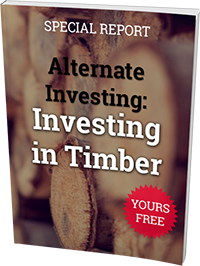The top university endowments have been announcing their annual investment returns over the past week.
Harvard University announced its endowment rose 15.4% in the fiscal year ending June 30th. That return trailed Yale University’s 20.2% and Stanford University’s 17% for the same period.
These are solid returns. But each endowment trailed the S&P 500’s return of 24.6% over the same period by a substantial margin.
Once again, look for the “smartest guys in the room” to catch a lot of flack for being unable to match, let alone beat, a simple S&P 500 Index fund.
That said, it’s not like Harvard hasn’t been making money. In fact, the Harvard endowment generated an average of 11.4% over the past five years. Notwithstanding the challenges of the financial crisis, that’s not far off its long-term track record of 12.3%.
The real issue is that Harvard and its academic rivals have not only trailed the S&P 500 over the past five years, but also have even struggled to match a conventional 60/40 mix of U.S. stocks and bonds.
The ‘Yale Model’ Since the Crisis
Like its top rivals, Harvard adopted the investment strategy pioneered by David Swensen of Yale in the 1980s. This strategy involved diversifying investments beyond mainstream U.S. stocks and bonds into investing in non-traditional asset classes like timber, private equity, real estate and global stocks and bonds.
Up until 2008, it was hard to argue with this approach. After all, Yale’s endowment boasted 15.6% average annual returns through 2007 — and no down years — stretching back to 1987.
That changed when the value of Harvard’s endowment tumbled 27.3% in 2008.
As a result, the Harvard endowment’s current 10-year track record dropped to a less impressive average return of 8.9%. That compares with 8.38% for the S&P 500 over the same period. Yale’s 10-year return figure stands at 11% and Stanford’s at 9.9%.
Harvard officials would argue that comparing its recent performance to the S&P 500 misses the point. After all, the Harvard “policy portfolio’s” allocation to U.S. equities is only 11%.
Furthermore, this U.S. stock allocation actually outperformed the S&P 500 in 2014 by 1.1%, thereby proving that Harvard’s money managers can actually “beat the market” when investing in U.S. stocks.
So what accounts for Harvard’s underperformance over the past five years?
Place the blame on asset allocation. Many of Harvard’s “alternative investments” — commodities, hedge funds and global stock markets — have lagged U.S. stocks over the past five years. For example, an 11% allocation to emerging markets has massively underperformed the S&P 500.
Why You Should Invest Beyond the S&P 500
Modern portfolio theory holds that “asset allocation” explains over 90% of the variability of a portfolio’s investment returns. Other studies that suggest that the percentage explaining the actual level of returns is even higher.
So the most important decision is whether to invest in emerging markets or hedge funds that matters more than which emerging market or hedge fund you invest in.
But what does all of this mean for you as a retail investor?
After all, if you can beat Harvard with a simple S&P 500 index fund, as you could have over the past five years, why bother with an exotic investment strategy like Harvard’s in the first place?
Well, if you have a long time horizon like Harvard, you really should.
Yes, the S&P 500 has generated 16.88% over the past five years. But that’s not typical. Over the last 40 years, the S&P 500 has generated an annual return of only 10.29%.
Harvard’s 12.3% average annual returns over the past 40 years beat the S&P 500 by 2.01% per year.
That may not seem like much. But 12.3% annual returns are enough to turn $1.4 billion (the size of Harvard’s endowment in the 1973) into $22.8 billion today. The same amount invested in the S&P 500 generated only $21 billion. If you’re Georgia Tech, that difference of $1.8 billion is about the size of your entire endowment.
How You Can Invest like Harvard
Today, there are exchange-traded funds (ETFs) that allow you to track Harvard’s strategy in your own portfolio. Since 2009, I have been mimicking Harvard’s “policy portfolio” for my clients using ETFs. The program has tracked the returns of the Harvard endowment quite closely.
Below are a handful of ETFs that I use to invest in “alternative asset classes” for my clients.
Although you can’t go out and buy New Zealand and Romanian forests like Harvard can, you can buy an ETF that invest in timber stocks like iShares Global Timber & Forestry (WOOD). This ETF tracks S&P Global Timber & Forestry Index comprised of approximately 25 of the largest publicly traded forest and timberland companies.
The PowerShares Global Listed Private Equity Portfolio (PSP) invests in publicly traded private equity firms, tracking the Red Rocks Global Listed Private Equity Index.
If you want to track the performance of hedge funds, two new ETFs do the trick. Both the AlphaClone Alternative Alpha ETF (ALFA) and Global X Guru Index ETF (GURU) employ strategies that allow you to invest in the stocks favored by the largest hedge funds. ALFA even allows you to go short in the event of a sustained market downturn.
The bottom line?
Investing like Harvard by diversifying beyond mainstream U.S. stocks and bonds generates market-beating performance. But it does take patience and a long-term investment horizon.
The folks running the Harvard, Yale and Stanford endowments aren’t as dumb as you may think.
Disclosure: Nicholas Vardy holds each of the investments mentioned in this write-up personally and for his Global Guru Capital clients. Global Guru Capital is a Securities and Exchange Commission-registered investment adviser, and is not affiliated with Eagle Products.
In case you missed it, I encourage you to read my e-letter column from last week about the United States returning to the global competitiveness podium. I also invite you to comment in the space provided below.




